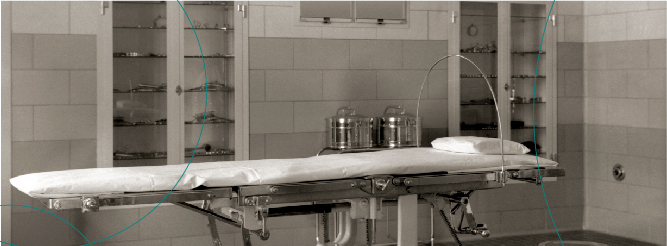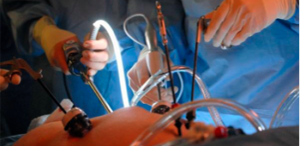
Technological innovations and medical research go hand-in-hand when it comes to developing new techniques or tools to treat patients and whichever condition or illness they might present. We can see this in the advancements made for physical therapy, in the development of new vaccines to treat emerging viruses, or in the creation of more efficient prosthetics.
These innovations can also be found in the surgical field for any type of procedure, from the operative tools used to carry out the surgery to the fact that the surgeon sometimes isn’t even in the operating room, since surgical robots have been used to control the instrumentation under the direction of the surgeon.
At LIMARP®, we ensure that our technology is always up to date, to provide our patients with the highest quality care. Through these tools, we can help provide more personalized treatment with less health risks to each and every patient.
Our surgical and medical teams also dedicate themselves to continued education on how best to implement these technologies, ensuring safe and effective treatments. The state-of-the-art technology we use for surgery is the result of constant evolution whose origin can be traced all the way back to the Neolithic era, which is known as the final stage of the Stone Age.
This means that humans have been performing surgeries ever since they learned to manipulate basic tools and although the conditions under which these procedures were performed seem horrific to us now, ancient surgeons started practicing with what was available to them and their findings helped jumpstart a medical specialty that keeps evolving today. For this article, we will dive a little deeper into the history of surgery and some of the techniques that ancient surgeons used throughout the years to treat wounds or illnesses.
Surgery is the branch of medical practice that treats injuries, diseases, and deformities by the physical removal, repair, or readjustment of organs and tissues, often involving cutting into the body. As we’ve mentioned before, the history of surgery can be traced back all the way to the Neolithic era and the first surgical techniques were developed to treat injuries and traumas.
Archaeological and anthropological studies have shown that surgical techniques for suturing lacerations, amputating limbs, and draining and cauterizing open wounds were used all over the world in ancient times[1]. One of the first recorded procedures carried out by a surgeon during these times is trephining or trepanation, which consisted in drilling or scraping the skull until exposing the dura mater to treat health problems related to intracranial pressure and other diseases[2].
Other surgical techniques used in ancient history included setting bones and bloodletting.
Research has proven that the Aztecs were some of the first to practice intramedullary fixation, which is a surgery that repairs the bone and keeps it stable, by using wooden pegs to reunite the pieces of broken bone. Their contributions to modern medicine and specifically to modern surgery are visible in several modern practices, most notably in the practices of arthrocentesis and fracture repair[3].
Ancient Greeks were known for performing bloodletting, which consisted in withdrawing the blood from a patient to prevent or cure illness and disease. This civilization developed iron tools to carry out the surgery, but the risk of infection or death was still high[4]. They were also known for soaking wounds in wine to prevent infection, while other cultures and civilizations turned to the use of honey, turpentine, and vinegar.
Anesthesia was basically non-existent during these times and the remedies that were used included alcohol, cannabis, and opium to sedate the patient.
Galen, a physician from Ancient Rome, was heavily influenced by the Greeks and his knowledge led him to become doctor to the gladiators for three years, as well as the Emperor’s personal surgeon. Since human dissection was illegal at the time, he practiced on animals to learn about anatomy[5]. His medical findings were also related to amputations and eye surgery, and his medical influence carried on into Medieval times.
Around 900 AD, Al-Zahrawi, who was a famous Islamic surgeon, wrote books about orthopedics, military surgery, and ear, nose, and throat surgery, and his influence reached far beyond Islamic territories since some Western medical practitioners also used his findings to treat the sick and wounded[6].
All of the medical findings that arose during Ancient times also helped shape medicine and surgical techniques during Medieval times and the Renaissance. However, as is the case with most scientific advancements, many medical practitioners began to disprove many of what was established by their predecessors and this was due because surgery was starting to become formalized. Surgery was still seen as a lesser profession so it wasn’t taught at schools, but it continued to be practiced and improved once the Vatican allowed the dissection of human bodies.
Many practitioners learned how to perform surgery through observation and apprenticeship, and it wasn’t until the 1700’s when medical school first emerged and the profession really took off. Around this time, many advancements in the field were beginning to appear, such as a more comprehensive approach to human anatomy, the use of rose oil and turpentine for treating gunshot wounds, and ligating blood vessels during amputation to stop hemorrhage.
It wasn’t until Modern times that there was a major breakthrough in anesthesia methods and the earliest general anesthetic was developed in Japan in the early 1800s. In the same century, ether and chloroform were being used as anesthetic, despite their numerous hazards, it was even used in childbirth. Other drugs were continued to be used to sedate patients, such as opium, marihuana, and cocaine[7].
Another breakthrough in the surgical world came around the mid 1800’s with the improvements of germ theory, hand-washing, and sanitations. Before this, infections were still poorly treated and were one of the reasons why many surgeries throughout history were not successful. Around this time, surgeons also began sterilizing surgical instruments, clothes, and hands before performing any kind of surgery. They also started wearing rubber gloves in 1890 and with these changes, patient outcomes began improving and survival rates steadily climbed[8].
We’re now getting closer to current times and with the arrival of the 20th century, the world also saw the emergence of novocain[9], a local anesthetic that could numb any part of the body. However, anesthesia also progressed alongside surgical procedures and novocain is no longer used for complex surgeries; doctors now recur to general or local anesthesia.
Blood transfusions, antibiotics and penicillin finally made surgery safer and in the latter half of the twentieth century there were many surgical advancements, including laser eye surgery, heart transplants, and cochlear implants. The history of surgery just keeps growing and now, in the 21st century, we’re seeing more surgical innovations in different fields, including bariatric surgery.
At LIMARP®, our team of surgeons perform laparoscopic surgery is a minimally invasive type of surgery that allows doctors to perform operations using very small incisions. Laparoscopes, or small cameras, are threaded through the incisions to display video of the internal abdomen on a monitor, allowing the doctor to perform surgery without leaving a large scar
Contact Us to Learn More
If you want more information about this topic, schedule an appointment with one of our doctors. We can help determine the right treatment for you. Contact us online anytime or give us a call at (619) 373-0229.
References
[1] W. J. Bishop, The early history of Surgery. Hale, London, 1960.
[2] A. Agelarakis, “Early Evidence of Cranial Surgical Intervention in Abdera, Greece, A Nexus to On Head Wounds of the Hippocratic Corpus”. Mediterranean Archaeology & Archaeometry, Vol.6, No.1, 5-18, 2006
[3] Buck, Julia, “From the Aztecs Towards Modernity: a Thesis on the Early History of Mexican Surgical Practice” (2015). Honors Theses. 2530. https://scholarworks.wmich.edu/honors_theses/2530.
[4] “Surgery… a Violent Profession”. https://www.hartfordstage.org/stagenotes/ether-dome/history-of-surgery. (Accessed July 21st, 2022).
[5] Lois N. Magner (1992). A History of Medicine. CRC Press. p. 91
[6] “This Won’t Hurt a Bit: A Bloody (and Painful) History of Surgery”. https://www.rasmussen.edu/degrees/health-sciences/blog/history-of-surgery/.
[7] Brain PF, Coward GA. A review of the history, actions, and legitimate uses of cocaine. J Subst Abuse. 1989;1(4):431-51. PMID: 2485453.
[8] Lu Wang Adams, Carol A. Aschenbrenner, Timothy T. Houle, Raymond C. Roy; Uncovering the History of Operating Room Attire through Photographs. Anesthesiology 2016; 124:19–24 doi: https://doi.org/10.1097/ALN.0000000000000932
[9] Ruetsch YA, Böni T, Borgeat A (August 2001). “From cocaine to ropivacaine: the history of local anesthetic drugs”. Current Topics in Medicinal Chemistry. 1 (3): 175–82. doi:10.2174/1568026013395335


